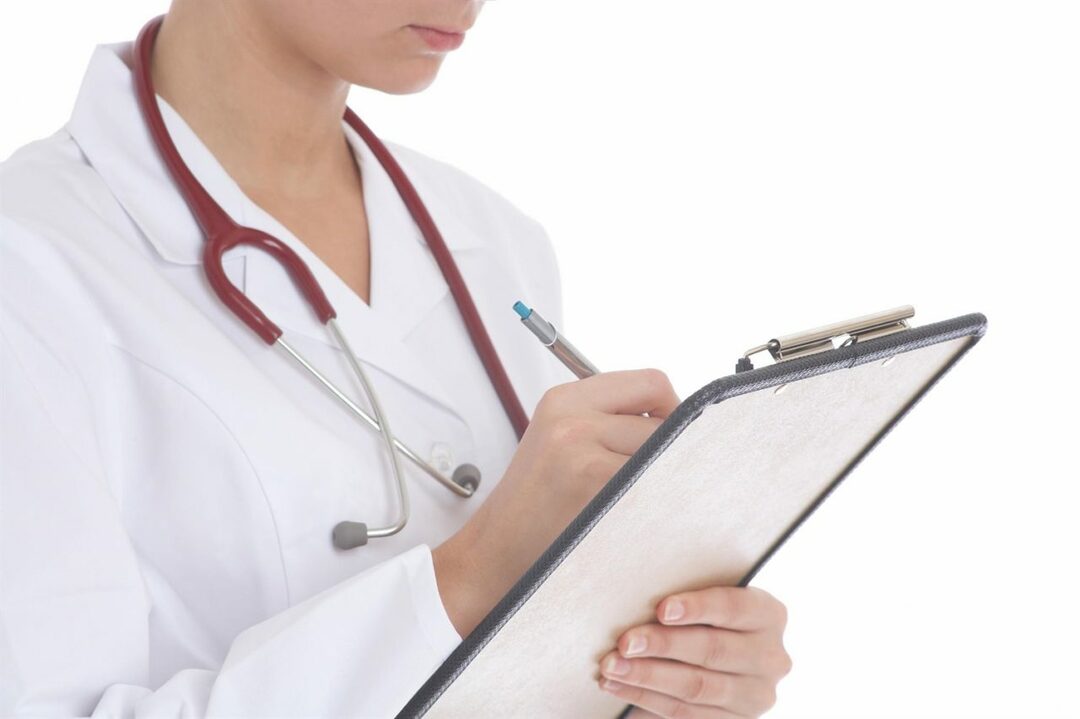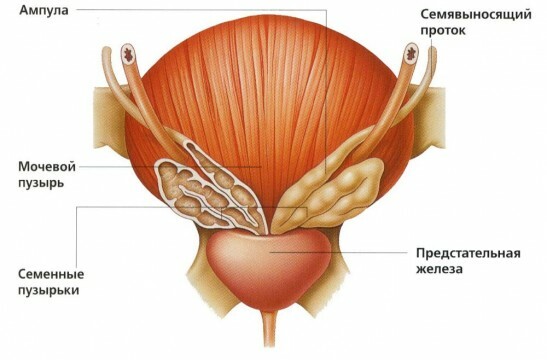Cystic ovarian degeneration is a serious gynecological disease, often leading to infertility. As a result of the disease, cysts are formed in the ovaries, which leads to an increase in internal genital organs. About 23% of women with a regular cycle at the age of 20-35 years have experienced this disease. The probability of detecting cystic ovarian degeneration increases in women taking hormonal birth control pills.

What is cystic ovarian degeneration
In modern medicine, cystic ovarian degeneration is also called polycystosis, ovarian multicystosis, cystic degeneration. At a certain point in the menstrual cycle, the mature follicle bursts and an egg leaves it, ready for fertilization. This is how ovulation occurs. If, for some reason, the fertilization process does not occur, then the organ does not function properly.=
The follicle, which has not burst in its time, begins to grow. In appearance, it resembles a bubble filled with liquid. So the ovarian cyst is formed. The bubble begins to stretch, and can reach a threatening size. If the internal organs are malfunctioning, even a healthy woman may experience small-cystic degeneration of the ovaries. If the failure periodically repeats, all the follicles can go into the category of cysts. In this case, ovulation does not occur and there is a problem with pregnancy.
When the number of cysts occurs, the genitalia increase in size. Follicular cysts in the picture of ultrasound are like a bunch of grapes. If the disease has spread only in one ovary - a woman has a chance to become pregnant, because another ovary continues to function normally. If cystic degeneration has spread in both ovaries - a woman is infertile.
The first signal about the occurrence of polycystosis is the reduction of menstrual bleeding to two days or their cessation at all.
Causes of
The exact cause of cystic ovarian degeneration has not yet been established, but doctors agree that there are a number of factors that trigger the onset of the disease:
- Increased development of the female hormone androgen hormone by the body. This can manifest itself in the growth of hair on parts of the body that are characteristic only of men;
- Thickening of the capsule of the ovaries;
- Dysfunction in the thyroid gland, adrenal glands, hormonal failures;
- Severe nervous shocks;
- Obesity. The increased weight of a body can provoke occurrence of cystic degeneration of ovaries;
- Increased sugar content in the blood;
Most often, for help to a specialist, girls are addressed in the childbearing period, but who have not undergone any pregnancies. It is also possible the emergence of primary multicystosis in girls during puberty.
The adjusted hormonal background is very important for any woman. A slight deviation from the norm can provoke a number of gynecological diseases. The impetus to the occurrence of cystic ovarian degeneration can be:
- Treatment of other diseases with the help of hormonal therapy;
- Receipt of birth control pills;
- Period of puberty;
- Sharp climate change;
- Incorrect food intake;
- Complicated during previous pregnancy;
- Abortions, artificial childbirth;
- Failures in the endocrine system.
Symptoms of

At the appearance of the first signs of polycystosis, a woman may notice the following symptoms:
- Violation of the monthly cycle. Bleeding can be for a couple of days or even disappear. If this is repeated systematically - a woman should urgently turn to a gynecologist;
- If during the monthly bleeding very strong and accompanied by a sharp pain;
- The absence of ovulation, and as a result of this the infertility that has arisen;
- Deterioration of a woman's condition for no apparent reason. There is a headache, increased fatigue, a woman becomes irritable and often falls into depression;
- Body mass increases dramatically;
- Begin to grow dark hair on the legs, hands;
- Skin in the face and neck becomes oily, acne appears;
- Constant aching pain in the ovaries;
- There may be mastopathy.
The woman most often explains the occurrence of these symptoms by the menstrual cycle, changing weather conditions, moving to a new place of residence and so on. And only strong pains or unsuccessful attempts to become pregnant lead the woman to a gynecologist.
Diagnosis
The earlier a woman applied with complaints about worsening health to a doctor, the better. Timely diagnosis will help in the initial stage of the disease to identify the disease and quickly begin its treatment.
To make an accurate diagnosis and begin treatment, the doctor will refer the patient to the following examinations:
- Laparoscopy. This type of diagnosis allows you to immediately perform the necessary manipulations to eliminate the cause of the disease;
- Inspection with the help of the ultrasound device. At US the doctor can diagnose practically any disease of a small basin of the woman. On the screen, the doctor will see a decrease in the size of the uterus, and the ovaries will be greatly enlarged. The ovaries will be compacted, gray in color;
- Biochemical blood test. This analysis will show the content in the blood of fats, the rate of which is likely to be overestimated;
- Blood test for the number of male hormones, the content of insulin.
Treatment of
Cystic ovarian degeneration is a rather insidious disease. Untimely treatment of a doctor can lead not only to the appearance of infertility, but also to the appearance of other diseases:
- Cancer of the uterus and ovaries;
- Endometriosis;
- Obesity;
- Vascular disease.

At the beginning of treatment, the gynecologist puts the following tasks to perform:
- Reduction in the number of male hormones;
- Adjust the monthly cycle of the patient;
- Reduce the risk of cardiovascular disease;
- Normalization of the hormonal background;
- Help the patient become pregnant.
Several decades ago, there were only two types of treatment: surgical intervention and hormone therapy. To date, the picture has changed - there are several types of treatment that can be used alternately or in a complex:
- Decreased body weight. It has been clinically proven that with excessive weight, irreparable processes occur in a woman's body. The first point in the process of treatment is exactly getting rid of obesity. Reduction should be smooth, without exposing the body to additional stress. With gradual weight loss, the patients notice that the menstrual cycle begins to return to normal. To get rid of extra pounds, a gynecologist will advise you to seek help from a dietitian or develop a diet yourself. Swimming, running and other sports will only help to speed up the process of losing weight.
- Stimulation of ovulation. This method applies to those patients who are trying to become pregnant. Stimulation is carried out with the help of various drugs. It is best at the beginning of treatment to use weak drugs, and only then, if they are ineffective, move to stronger ones. Stimulation is best done after drug treatment, so the chance of getting pregnant increases. Hormonal contraceptives. In addition to the main task of preventing unwanted pregnancies, hormonal drugs help the amount of male hormones.
- Administration of drugs that reduce androgens. Preparations containing antiandrogens may be prescribed as a separate treatment, or in combination with contraceptives.
- Application of metformin. This drug is prescribed primarily in cases of diabetes mellitus. Incorrect work of insulin provokes not only diabetes mellitus, but also cystic degeneration of the ovaries. According to statistics, women taking metroformin noticed that the menstrual cycle began to recover independently, without the use of additional treatment. The course of treatment with this drug lasts at least six months, and positive dynamics can be observed after three months.
- Surgical intervention in the form of laparoscopy or a cavitary operation. The surgical solution of the problem is applied only after the ineffectiveness of drug treatment. Also, the rapid growth of cysts and a sharp increase in ovaries can be the reason for the operation. During the operation, when the disease progresses, a decision can be made to completely or partially remove the ovary.
On the symptoms of the disease and the ways of its treatment, cystic degeneration of the right ovary does not differ from cystic degeneration of the left ovary. At the first symptoms you should consult a doctor, self-medication should not be engaged. Diagnostics carried out will help to really assess the situation and choose the right treatment.



